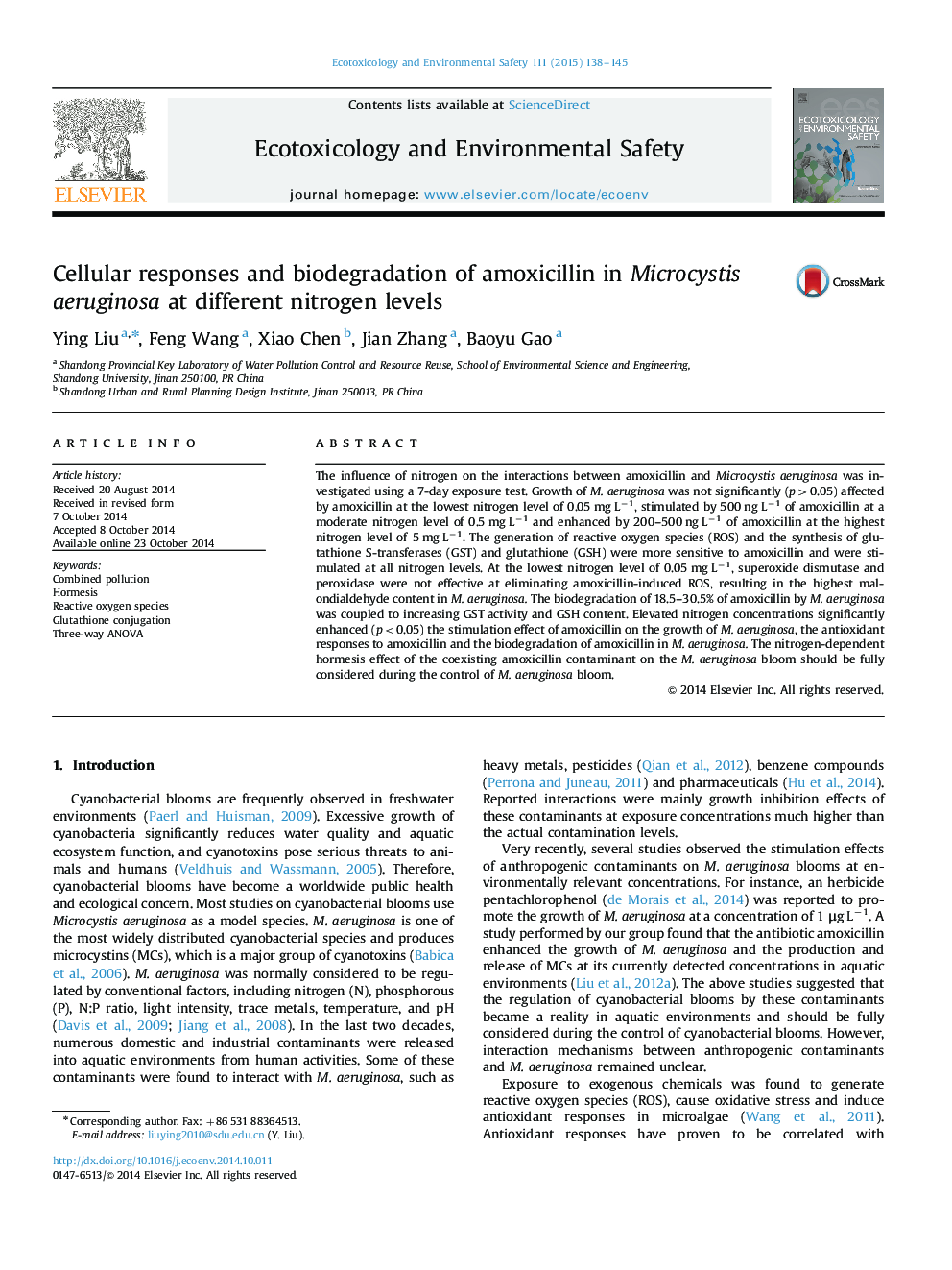| Article ID | Journal | Published Year | Pages | File Type |
|---|---|---|---|---|
| 4419860 | Ecotoxicology and Environmental Safety | 2015 | 8 Pages |
•Stimulation of amoxicillin on Microcystis aeruginosa bloom is nitrogen-dependent.•Antioxidant responses to amoxicillin are enhanced by elevated nitrogen level.•Nitrogen enhances algal degradation of amoxicillin via glutathione conjugation.•Oxidative damage of amoxicillin is alleviated by increasing nitrogen level.•18.5–30.5% of amoxicillin is degraded by M. aeruginosa.
The influence of nitrogen on the interactions between amoxicillin and Microcystis aeruginosa was investigated using a 7-day exposure test. Growth of M. aeruginosa was not significantly (p>0.05) affected by amoxicillin at the lowest nitrogen level of 0.05 mg L−1, stimulated by 500 ng L−1 of amoxicillin at a moderate nitrogen level of 0.5 mg L−1 and enhanced by 200–500 ng L−1 of amoxicillin at the highest nitrogen level of 5 mg L−1. The generation of reactive oxygen species (ROS) and the synthesis of glutathione S-transferases (GST) and glutathione (GSH) were more sensitive to amoxicillin and were stimulated at all nitrogen levels. At the lowest nitrogen level of 0.05 mg L−1, superoxide dismutase and peroxidase were not effective at eliminating amoxicillin-induced ROS, resulting in the highest malondialdehyde content in M. aeruginosa. The biodegradation of 18.5–30.5% of amoxicillin by M. aeruginosa was coupled to increasing GST activity and GSH content. Elevated nitrogen concentrations significantly enhanced (p<0.05) the stimulation effect of amoxicillin on the growth of M. aeruginosa, the antioxidant responses to amoxicillin and the biodegradation of amoxicillin in M. aeruginosa. The nitrogen-dependent hormesis effect of the coexisting amoxicillin contaminant on the M. aeruginosa bloom should be fully considered during the control of M. aeruginosa bloom.
